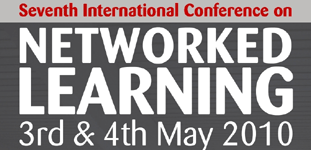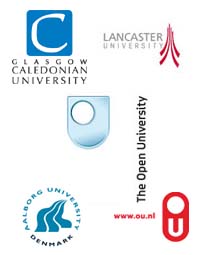

Giving shareable form to collective thought using a Shared Thinking approach
Nicholas Bowskill
University of Glasgow, Glasgow, United Kingdom
Abstract
This paper introduces the practice and theoretical framework for a new generative learning environment that creates shareable electronic artefacts from reflective dialogue across a whole group. These artefacts are quantitative and qualitative representations of student experience. By grouping these student-generated products new measures of student experience are created that inform both research and development. This approach created by the author is called Shared Thinking. This research is an interdisciplinary PhD study, funded by the Kelvin Smith scholarship, at the University of Glasgow. The PhD is based in the Faculty of Education with supervision shared with Psychology and Computing Science. Collating the different ideas discussed here, this study involves the use of electronic voting systems (EVS) technology in the face to face classroom; the use of a whole-group protocol (specifically a snowball or pyramid group-discussion technique); and the use of voting to generate an electronic shareable synthesis that can function as a mediating artefact (Anderson et al., 2006; Conole, 2008). The snowball group-discussion technique used here works by sharing the individual perspective, firstly by inviting each person to write down their view. Individuals then share their ideas within and between small groups until the whole class perspective is generated. This protocol works as a thinking routine much in the same way as Exploratory Talk (Wegerif, 2009). The mix of the snowball technique and the use of technology equates to a dialogical space (Mercer, 2000). However, the intention to collaboratively generate a whole-group perspective, as a synthesis of reflective conversations, changes things. This intention creates a learning disposition of collective curiosity and cooperative inquiry (Heron & Reason, 2006). Researchers and subjects work together to produce visible solutions to authentic problems. This learning disposition and the co-construction of a mediating artefact together transform the possibilities for learning, dialogue and participation. The 'dialogical space' becomes a 'generative environment' (Grabinger, 2000) that produces a mediating electronic synthesis for participants and vicarious learners (McKendree, Lee, Dineen & Mayes, 1998). This is participation-reification as a process and product with all the consequent implications for knowledge-building and knowledge-management (Wenger, 1998). I have called this new generative environment and socio-cultural practice, Shared Thinking. This environment contains a space, a structure, a reflective dialogue, a disposition, a purpose and a shareable product. This, in turn, informs the development of a shared understanding of the social, cognitive and developmental context.
| About NLC | Welcome Messages| Acknowledgwments | Conference Proceedings| Keynote Speakers| Index of Presenting Authors| Contact |